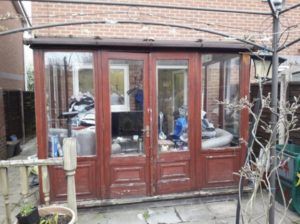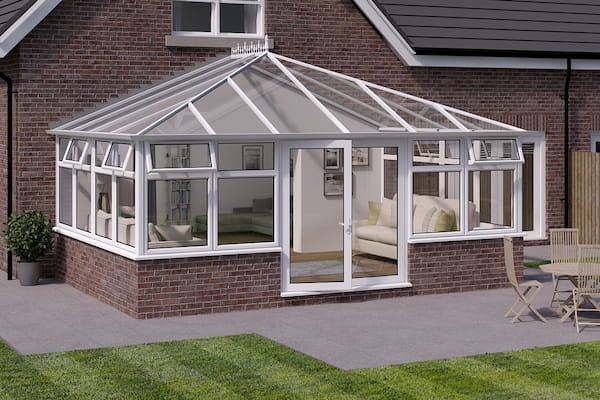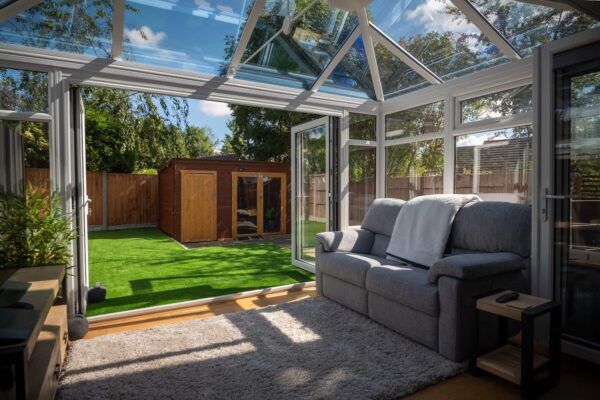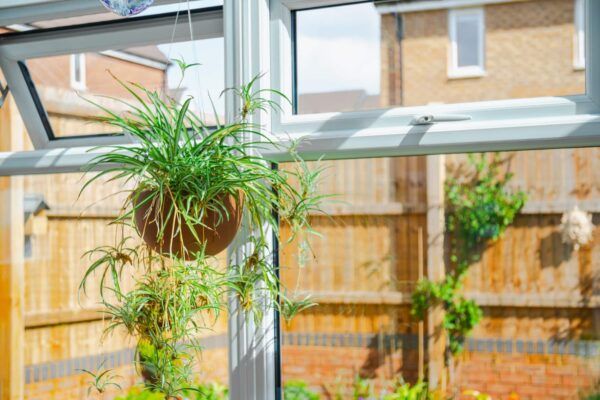If you plan to dismantle a conservatory, it’s important to plan carefully before beginning the project. However, if you do it the right way, it can be much quicker and more efficient.

Can I dismantle a conservatory myself?
It’s possible to dismantle your conservatory without the help of a professional — if you’re up for the challenge.
You might want guidance from the experts before you start. This could be as simple as completing some initial research online or speaking to our friendly team. Before contacting a professional, you might also consider creating a list of relevant questions to ask.
Conservatory removal and dismantling is a straightforward step-by-step process, but it’s a good idea to be prepared before starting the task on your own.
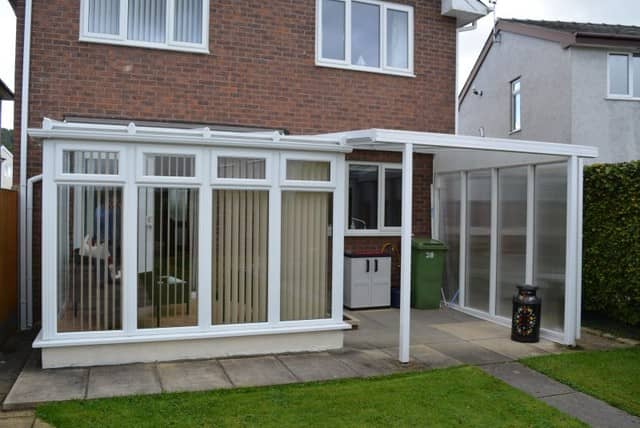
What tools do you need to dismantle a conservatory?
Dismantling a conservatory requires a set of specific tools to make sure the process is efficient and safe.
Key tools include:
- Screwdrivers
- Adjustable wrenches
- Pliers
- Wire cutters
- A hammer
- A pry bar
- A utility knife
- Safety goggles
- Work gloves
Plus, depending on the construction materials used in the conservatory, you may need specialised tools such as a reciprocating saw or a drill with various bits. Having the right tools on hand can make the dismantling process smoother and minimise the risk of damage to the structure or injury to yourself.
What is the best way to dismantle a conservatory?
There are two parts that make up a conservatory: the assembly (the main conservatory) and the base.
If you’re wondering how to dismantle a conservatory in the safest way, you’ll want to start with the main conservatory and work down to the base.
1: Empty the conservatory
Firstly, you’ll need to empty the conservatory. This includes any flooring, whether that’s carpet, laminate or vinyl.
This is a lengthy step of the process, so give yourself plenty of time to remove any furniture, internal fixings and flooring.

2: Remove all glazing
The conservatory frame needs to be stripped of windows and roof panels so that you’re left with a skeletal structure.

3: Detach the roof and guttering
The roof will be bolted to the house wall. This needs to be uncoupled, along with the individual fixings, which you will need to untighten and safely disengage from the top of the frames.

4: Take apart the conservatory frame
Most conservatories are custom-built to bespoke measurements and requirements. Therefore, this step can differ from build to build.
We recommend that you begin taking down your conservatory frames from the outside and work your way in towards the house wall. Continue to disassemble your conservatory parts until every door, post, connector and individual fitting has been removed.

5: Removing the base (optional)
If you’re replacing your dismantled conservatory with a new one, consider leaving the base and wall sections in place, so you can utilise these parts later.
There may be more for you to consider if you’re removing the entire structure. Conservatory foundations are usually dug out, with concrete blocks installed to reinforce the structure. So, a professional may need to assess the site to ensure the area is safe. They might also recommend the best course of action for the space.
If you already have an existing conservatory but want to give it an upgrade, discover how to replace your conservatory here.
6: Remove the waste
Finally, clean up the area where the conservatory once stood and dispose of materials responsibly. You may need to hire a conservatory waste removal service or take the materials to a recycling centre.
How to remove conservatory roof panels safely
When it comes to the conservatory roof, there are a few things to consider when removing the panels.
Some types of glazing can be heavy and difficult to handle, so be cautious as you remove each panel. If you’re not in control of your balance from the top of a step ladder, it’s even more crucial to take care.
We recommend that you get a spare pair of hands to help. You may require two ladders, with one person dismantling and the other holding the panel in place as it loosens. You could also make use of a third person on the ground to pass each panel down to once it’s been removed from between the glazing bars.
The removal of conservatory panels should be straightforward. You’ll need to carefully remove the rubber gaskets between the glazing bars and the glass. Then you’ll need to unscrew the glazing bar end caps before completely removing the bar cap itself.
What materials can be salvaged?
Once you’ve dismantled your conservatory, you’ll be left with a skipload of materials. Some will be reusable and some will need to be scrapped.
It’s possible that the majority of discarded materials can be recycled, whether that’s glass, polycarbonate, timber or uPVC.
It’s also a good idea to look for potential buyers before you dismantle your conservatory. There may be some people interested in a second-hand build, so you could make money for materials you would have otherwise thrown away.
FAQs
How hard is it to dismantle a conservatory?
Dismantling a conservatory can vary in difficulty depending on factors such as its size, construction materials, and your level of experience with DIY projects. Generally, smaller conservatories with simpler designs may be easier to dismantle, while larger or more complex structures could pose greater challenges.
How much does it cost to demolish a conservatory?
The cost of demolishing a conservatory can vary depending on several factors, including the size of the conservatory, its construction materials, the complexity of the dismantling process, and your location.
As a rough estimate, the cost to demolish a conservatory in the UK typically ranges from £500 to £2,000 or more. This estimate may include expenses such as labour, waste disposal fees, and any necessary permits.
How do I get rid of an old conservatory?
Once the conservatory is dismantled, you’ll need to dispose of the materials responsibly. Be aware of any regulations or restrictions regarding waste disposal in your area. Certain materials, such as asbestos or treated wood, may require special handling and disposal procedures to comply with regulations.
Where possible, separate materials such as glass, metal, and plastic for recycling. Many waste disposal facilities have recycling options for these materials, helping to reduce the environmental impact of disposal.
Remove and replace your conservatory with ConservatoryLand
Not every conservatory requires a complete disassembly, you might only need to replace your existing conservatory. We can help you design your brand-new room using our online quote engine. Whether you want bi-folding doors, a glass roof or a choice of colours, enter your specifications and choose your preferences directly in our tool — it only takes a few minutes to complete.
Get your personalised price today using our quote engine.
